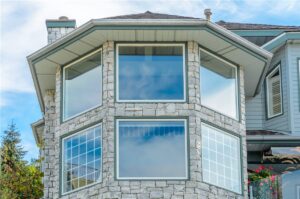Windows Buying Guide for Homeowners: Types and Styles
 Replacing outdated windows is more than just a visual upgrade — it’s a smart investment that enhances energy efficiency, brings in better natural light, and transforms your living space into something truly inviting. However, there are so many types of windows out there that it can be hard to find the right one for your home.
Replacing outdated windows is more than just a visual upgrade — it’s a smart investment that enhances energy efficiency, brings in better natural light, and transforms your living space into something truly inviting. However, there are so many types of windows out there that it can be hard to find the right one for your home.
That’s where MaxHome comes in. Our goal is to simplify the process and help you choose solutions that match exactly what you want for style and function. This guide will help you learn about the most popular window types, their features, and why they might be the perfect fit for your house.
Main Types of Windows
Various window designs offer unique benefits. Each option caters to different architectural styles, functional requirements, and budget considerations. Let us take a look at the major types available on the market.
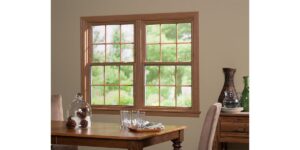
Double-Hung and Single-Hung Windows
The classic double-hung and single-hung windows are versatile choices that suit a variety of needs. Both feature two sashes, but their functionality differs: in single-hung options, only the bottom sash moves, while in double-hung solutions, both the top and bottom sashes are operable.
Double-hung windows are especially popular in regions with extreme seasons because they provide excellent ventilation when both sashes are open. On the other hand, single-hung types of windows are a go-to option for spaces where simplicity and budget-friendliness are key considerations.
Pros
- Double-hung: Great for ventilation, easy to clean with tilt-in sashes, and ideal for various architectural styles.
- Single-hung: Affordable and low maintenance; fewer moving parts make them reliable and durable.
Cons
- Double-hung: Pricier and may experience higher air leakage than casements.
- Single-hung: Not the best for ventilation; cleaning the fixed upper sash is more challenging.

Casement Windows
Casement windows are hinged on one side and operated with a crank. They open outward to provide unobstructed views and exceptional airflow. These window types are an excellent choice for modern homes with sleek lines and functional designs. Thanks to their tight seals, casement solutions are among the most energy-efficient options available, which makes them a popular choice for areas of your home where superior insulation is essential.
Pros
- Tight seal makes them perfect energy-efficient windows
- Easy operation, even in hard-to-reach areas like above sinks
- Exceptional ventilation provided when fully open
Cons
- Exterior clearance required to open fully
- The crank mechanism may wear out over time

Sliding Windows
Sliding windows move horizontally along a track and allow for a sleek and modern look that maximizes glass area for natural light. They are the best type for spaces where easy operation is important, like kitchens or living rooms. Their minimalist design fits seamlessly into contemporary homes, giving both practicality and style.
Pros
- Space-saving design with no need for outward clearance
- Large panes offer expansive views
- Minimal mechanical parts make them low maintenance
Cons
- Tracks can accumulate dirt and require regular cleaning
- Less ventilation compared to other types of windows like casement or awning
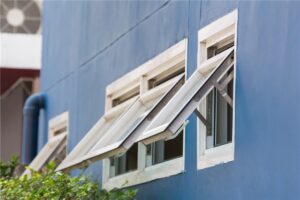
Awning Windows
Awning windows do exactly what they sound like: create a protective awning effect due to how they’re hinged at the top and open outward. Perfect for bathrooms, basements, and other small spaces. These window types excel in areas that experience frequent rainfall, as their design allows for ventilation without letting water in. Their compact size and functionality make them a great addition to modern and traditional homes alike.
Pros
- Ventilation during rain; the design keeps water out
- Tight seals enhance energy efficiency
- Works well in hard-to-reach areas
Cons
- Limited size options
- Can obstruct pathways when open

Bay and Bow Windows
Bay windows consist of three panes angled outward, while bow windows use four or more panes for a curved look. Their ability to maximize light and views makes them a favorite for living rooms and dining areas. Both types of windows add architectural flair and extra interior space. These are best for giving reading nooks that cozy feel or extra storage beneath the seating area they provide.
Pros
- Maximum of natural light and unobstructed panoramic views
- Additional interior space for seating or décor
- Valuable enhancement of your home’s visual appeal
Cons
- Higher costs due to custom designs and installation needs
- Cleaning exterior panes can be difficult on upper floors
Picture Windows
Picture windows often serve as a stunning focal point in living rooms, bedrooms, or hallways. These window types are best described as large, fixed panes that frame scenic outdoor views. They are a popular choice for rooms where ventilation isn’t necessary but natural light and an expansive view are priorities.
Pros
- An abundance of ample natural light
- Tight seals make these solutions energy-efficient
- Low maintenance; no moving parts mean fewer repairs
Cons
- No ventilation since they don’t open
- Limited functionality compared to operable options
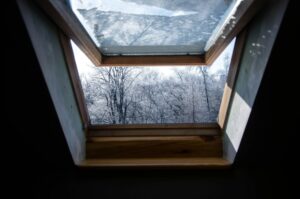
Skylight Windows
Skylight types of windows are installed on the roof to bring in overhead light. These are the best solutions for rooms where you have limited wall space. They’re perfect for bathrooms or attics where natural light is desired. Operable skylights also offer ventilation, which makes them a versatile option for both aesthetics and practicality.
Pros
- Fills your home with natural light and reduces the need for artificial lighting
- Adds architectural interest and boosts property value
- Available in fixed or operable window styles for ventilation
Cons
- Prone to leaks if not installed correctly
- Higher maintenance and replacement costs than typical windows
Specialized Window Options
Does your home have a unique design or specific functional requirements? This is where specialized windows can help. As the name suggests, these window types are designed to address distinct challenges, from enhancing privacy and improving security to maximizing ventilation.
Glass Block Windows
Want to give yourself privacy without compromising natural light? You should look into glass block types of windows. These thick, textured blocks allow sunlight to filter through while obscuring visibility. They are ideal for any space where you want both light and privacy like bathrooms or even changing areas.
Their durability and resistance to noise and weather add to their appeal. Imagine a bright and private bathroom where you can relax without worrying about prying eyes; glass block window types provide exactly that. These windows are fixed, meaning they are inoperable.
Jalousie Windows
Jalousie windows, with their adjustable horizontal slats, are the best window type for creating a constant breeze. They work especially well in warm climates or areas like sunrooms and porches where ventilation is key.
These allow you to control the airflow by tilting the slats, which makes them both functional and stylish. However, they aren’t as energy-efficient or secure as other types of windows. Air leaks are a problem, so they’re just not the best for insulation. Then again, if you want to enjoy a refreshing breeze in a cozy sunroom or shaded porch, jalousies are a practical choice.
Egress Windows
Egress windows are designed for emergency exits to give you an escape route in basements or bedrooms. These large window types should meet building code requirements while offering peace of mind and bringing in natural light. If you’re updating a basement or bedroom, these solutions ensure compliance and enhance the usability of your space.
Despite needing a more complex installation process and an overall higher cost, egress options are definitely worth the extra effort and investment if you want to have both functionality and security.
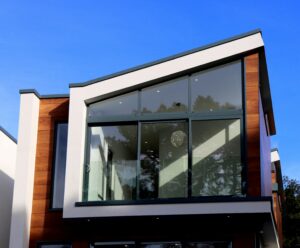
Custom Windows
Do you have a really unique idea that a generic window just can’t cover? This is where custom windows can help. This type lets you bring that vision to life by accommodating irregular shapes, sizes, or window styles.
Want a round window in a staircase, or a panoramic picture window in your living room? Custom designs allow you to achieve exactly what you want. They’re definitely more expensive and likely take longer to order and install, but their ability to match your aesthetic and functional needs makes them worth the investment. Want to be that unique building in the neighborhood? Custom types of windows can help you with that.
Window Frame Materials
The material of your window frame has a significant impact on durability, efficiency, and style. The right choice ensures your solution not only looks good but also performs well over time.
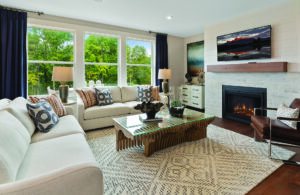
Vinyl Frames
Vinyl frames are a practical solution if you’re after an affordable, low-maintenance option. They’re highly resistant to weathering, won’t warp or rot, and provide excellent insulation. Their durability and minimal upkeep make them a favorite among homeowners seeking budget-friendly and reliable windows.
While such frames may not offer the intricate designs of other materials, their clean and modern look blends seamlessly with many architectural styles. If you’re looking for a long-lasting, energy-efficient option that delivers excellent performance and value, vinyl window types are a dependable choice.

Wood Frames
Aiming for a more classic, elegant look? Wood frames can be an excellent option. They offer timeless beauty and excellent insulation. The best thing about wood frames is you can paint or stain them to match your interior or exterior design.
Wood frames do require regular maintenance to prevent warping, rotting, or insect damage. If you’re willing to invest time in upkeep, these options bring a sophisticated charm that’s hard to replicate.
Fiberglass Frames
If durability and energy efficiency are your priorities, fiberglass frames are a no-brainer. They withstand extreme temperatures without expanding or contracting while maintaining their structural integrity over time. These frames can also be painted and give you space for more customization. Fiberglass is definitely more costly than others on this list, but these frames are a long-term investment that pays off in reduced maintenance and better efficiency.
Aluminum Frames
If you want sleek, contemporary designs with large glass panes, aluminum frames are an excellent choice. They are lightweight, strong, and perfect for larger window types like picture or sliding ones. Their slim profiles maximize glass area and enhance natural light while giving off a modern, minimalist aesthetic.
When it comes to insulation though, aluminum frames are not as effective compared to other materials unless you also include thermal breaks.

Composite Frames
Composite frames combine the beauty of wood with the low-maintenance benefits of vinyl. These options provide excellent insulation, durability, and a premium look that elevates your home.
While pricier than standard materials, composite frames strike a balance between aesthetics and performance. If you’re looking for high-quality frames that require minimal upkeep, composite is a top-tier option.
Maintenance and Replacement Tips
Proper maintenance extends the lifespan of your windows, however, it involves a bit of effort on your end. Here are some considerations to help you keep them at their best for years to come:
Cleaning and Inspection
Be sure to clean the glass and frames with mild soap and water to prevent dirt and grime buildup. Regardless of window types, you should inspect your solutions for cracks, peeling, or warping and address minor issues before they become unwelcome expenses.
Sealing and Energy Efficiency
Properly sealed windows improve insulation and lower heating and cooling costs. Do not forget to routinely check for drafts and reseal as needed to maintain their efficiency. Remember that cracked caulking or gaps around the frame eventually lead to higher energy bills and reduced comfort.
When to Replace Windows?
Would you like to learn some valuable window replacement tips? When windows become difficult to operate, show condensation between panes, or fail to block outside noise, replacement isn’t just an option — it’s a necessity. A well-planned upgrade to energy-efficient windows also brings significant returns through reduced utility costs and enhanced home aesthetics.

Choosing a Window Style for Your Home
When picking window styles, always factor in your climate, home design, and what you want your solutions to actually achieve. Here’s how:
Climate, Energy Efficiency, and Functionality
Your local climate should guide window selection and energy-saving features. In cold regions, triple-pane energy-efficient windows with insulated frames minimize heat loss, while low-E glass coatings reflect indoor heat back into your home. For warm climates, double-pane windows with UV-blocking technology prevent heat gain and protect interiors from sun damage. Advanced window systems can cut energy bills by up to 30% while maintaining comfortable indoor temperatures year-round.
Architectural Style
The window style you choose should never compromise your home’s aesthetics and architecture.
- Double-hung windows pair well with colonial and traditional homes
- Casement window types suit modern designs
- For larger spaces, bay or bow types add character and maximize natural light

Popular Trends
Today’s window designs blend aesthetics with functionality. Floor-to-ceiling windows and minimal frame profiles maximize natural light, while black frames provide bold architectural contrast in both modern and traditional homes. Energy-efficient features like triple-pane glass and smart tinting technology are becoming standard and reflecting growing environmental awareness and comfort demands.
FAQ
What is the most popular style of window?
Double-hung windows are among the most popular choices for homeowners, thanks to their timeless design, ease of operation, and versatility. Their ability to complement a wide range of architectural styles, from traditional to modern, makes them a go-to option.
How often should windows be replaced?
Windows typically last 15-30 years, depending on materials and maintenance. Symptoms like drafts, difficulty operating, or rising energy bills suggest it’s time for a replacement. For expert guidance in window styles and quality solution installation, turn to MaxHome to transform your home.
How do I measure for new windows?
To measure for new windows, record the width at the top, middle, and bottom of the opening, and use the smallest measurement. Repeat for height on the left, center, and right. For precise results, consult a professional installer.
Which window type is best for energy efficiency?
Double-pane or triple-pane types of windows with low-E glass coatings are a great choice for energy efficiency. Gas-filled panes and warm-edge spacers help keep your home comfortable and energy bills lower.
Can I install windows myself or should I hire a professional?
While DIY installation may save you some money, professional installation guarantees proper fit, long-term durability, and compliance with building codes. Trust MaxHome for a flawless installation.
Concluding Remarks
Your windows are essential to your home’s comfort, energy efficiency, and style. If you’re considering an upgrade to energy-efficient windows or exploring custom designs that elevate your space, MaxHome is ready to help you.
Contact us today for a free estimate and discover the perfect solutions for your home. Let’s create a MaxHappy home together!


